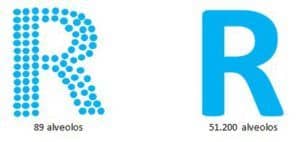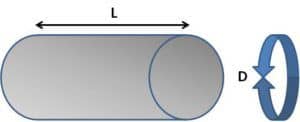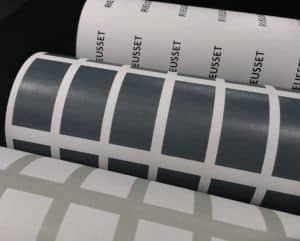11 Jan How a label is made – First steps
In our last post “So how is a label produced in Rieusset?” we talked about all the processes necessary for making a label. In this post we shall center only on the pre-printing process, from the time the customer sends us the label until it is engraved on the printing cylinders.
This will be the first of a series of posts explaining in detail all our processes, in which we will try to answer all those questions and/or doubts you may have.
Do you remember the word ROTOGRAVURE? It refers to the printing technique we use in Rieusset. If we analyze the word, it can be separated into two parts: ROTO and GRAVURE. ROTO comes from “rotary”, and GRAVURE refers to the etching or engraving of the cylinders.
The objective of rotogravure is engraving a metallic cylinder with the help of millions of little holes. These holes, which are technically referred to as cells, are arranged in different shapes and volumes that allow the ink to be transferred to the paper or film to achieve the desired design. The larger and deeper the cells are, the more ink they will transfer.
For example, if we wish to print an R, it will be of no use to engrave only 89 cells, but rather, in order to see the R clearly we must engrave 51,200 cells. Although so many cells are engraved, there are also blank spaces, but these are invisible to the human eye and we would need a magnifying glass to see them. Don´t you find that surprising?
In order to engrave the cells we need a machine that can do this precisely and quickly. For this reason we have engravers that can engrave 4,000,000 cells in 1 minute! The cells are engraved using a diamond or laser.
Now that we know what rotogravure is all about, we can explain what we do when a customer sends us an order. Let’s say the customer wants to print this label:
After the customer has sent us the desired label, the first thing we do is carry out a series of verifications: measurements, text size, images, gradients and colors. Once we are satisfied that everything is correct, we generate a pdf of the label and send this back to the customer for their approval.
The second step, after the customer has approved the label, is the separation of colors of the label. As you know, each cylinder only prints one color, so in this label there are 3 colors = 3 cylinders.
The third step is finding out how many labels fit on the repeat length (D) and the length of the cylinder (L). This will allow us to know the number of meters we need to print depending on the number of labels the customer has ordered.
If we convert the cylinder into a flat rectangle it would look like this:
So, if L =600 mm and D =660 mm, 18 labels could be printed on the entire repeat length.
Ultimately there will be three cylinders with:
- 18 green frames
- 18 blue rectangles
- 18 black words “Rieusset”
At this point we already know what we have to engrave on each cylinder. The manufacturing process for each one of the cylinders is the following:
- We take a blank iron cylinder with the previously calculated repeat length.
- We apply two layers of copper: a base layer and a Ballard layer.
- We polish the cylinder to a mirror finish.
- The Ballard layer is where the desired design is engraved with a diamond or laser.
- A layer of chrome is applied for hardness and cylinder durability.
- Finally the cylinder is polished to remove any impurities from the surface.
In the following image we can see the 3 cylinders ready to be put into the printing machine, where the darker parts are the cells. The corresponding color is then applied to each cylinder.
Do you want to know more? In our next post we will put these 3 cylinders into the printing machine and you’ll see how we print.
| We Manufacture: | Meet Rieusset: |











